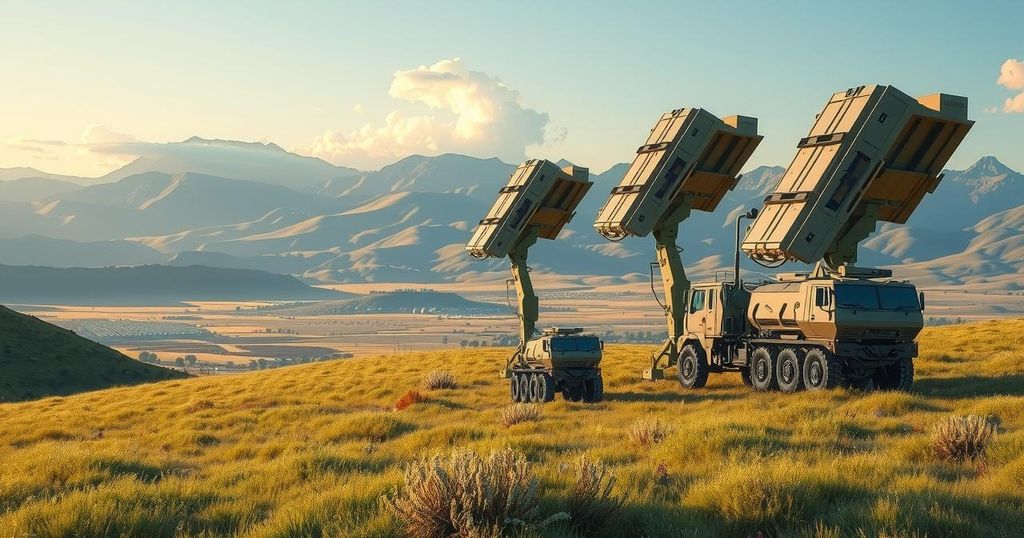Tajikistan has acquired Chinese HQ-17AE surface-to-air missiles, marking a significant enhancement of its military capabilities. The unveiling at a military parade highlights Tajikistan’s growing defense partnership with China, although details of the deal remain unclear. The acquisition is a strategic response to regional security challenges, particularly regarding threats from neighboring countries and instability in Afghanistan.
Tajikistan recently revealed its acquisition of Chinese HQ-17AE surface-to-air missiles (SAMs) at a military parade celebrating the 32nd anniversary of its armed forces in Dushanbe. This debut signifies an advancement in the country’s military capacities and underscores an strengthening partnership with China. However, details regarding the timing, cost, and quantity of these systems remain undisclosed, suggesting that this transaction occurred in late 2024 under a veil of secrecy typical of military dealings involving China.
The military parade showcased the HQ-17AE prominently, highlighting Tajikistan’s aspiration to modernize its defense amidst emerging threats. The system’s mobile design caters well to Tajikistan’s mountainous terrain, providing it with enhanced capabilities to counter various aerial threats. Observers noted that this acquisition signals deeper ties with China as Tajikistan quietly builds its military might.
Despite the HD-17AE’s unveiling during the parade on March 11, there has been no formal acknowledgment from Tajik or Chinese officials regarding the specifics of the sale. Experts speculate that negotiations may have concluded around late 2024, indicating a strategic timeline for training personnel and system deployments. The absence of clear information around the deal reflects traditional practices in military procurement conventions involving China.
The HQ-17AE is recognized for its advanced capabilities, including protection against aircraft, drones, and missiles. It is designed for mobility on wheeled platforms, which is particularly suited for Tajikistan’s geographic challenges. Its operational parameters, with a radar range of 30 miles and target engagement at 15 miles, enhance Tajikistan’s air defense strategy significantly.
Analysts from BulgarianMilitary.com assert that the HQ-17AE acquisition is pivotal for Tajikistan’s security, particularly along its border with Afghanistan, where instability poses ongoing risks. The system offers a credible defense mechanism against potential threats from regional adversaries, including Kyrgyzstan, whose military developments may have prompted this action.
Geopolitically, Central Asia remains a focus of competing pressures, with Tajikistan on high alert over uncertainties from Afghanistan and ongoing disputes with Kyrgyzstan. Russia’s primary attention on its conflict with Ukraine leaves a strategic gap in the region, prompting Tajikistan to bolster its defenses through partnerships with nations like China. This reflects a pragmatic response to contemporary security needs.
China’s sale of the HQ-17AE aligns with its overarching strategy to extend its influence in Central Asia, fostering military cooperation alongside economic ties. As Beijing continues to invest in Tajikistan’s infrastructure and security, the implications of this deal could reshape regional dynamics. Observers are keen to see how this acquisition unfolds and whether it signals a longer-term shift in Central Asia’s balance of power.
In summary, Tajikistan’s acquisition of the HQ-17AE SAMs signifies a crucial enhancement of its military capabilities and illustrates the growing partnership with China. The deal, while shrouded in ambiguity, underscores Tajikistan’s need to secure its borders amid regional tensions and evolving threats. The geopolitical landscape of Central Asia is set to experience shifts as this alliance may further influence the security dynamics of the region.
Original Source: bulgarianmilitary.com




